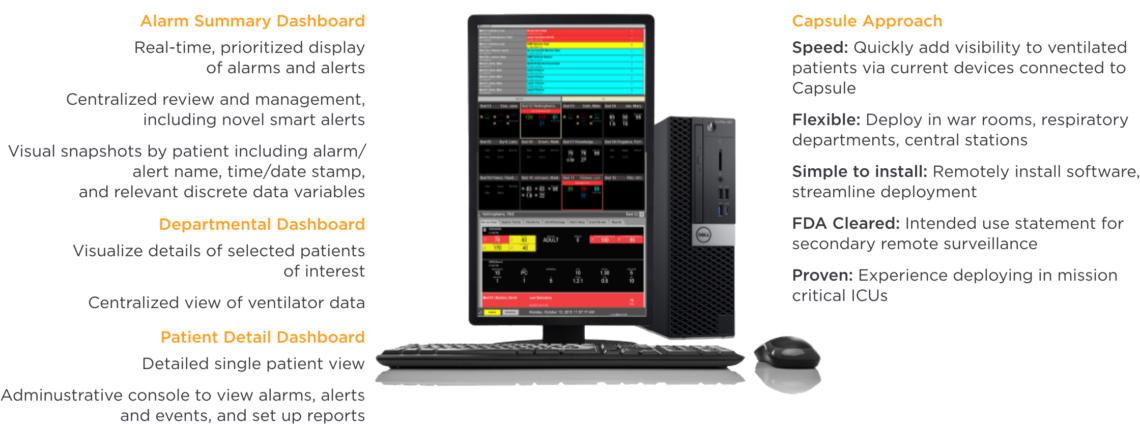The resourcefulness of our hospitals to expand capacity to meet the needs of this pandemic has been truly inspiring. From re-configuring ORs into ICU units, transforming an existing floor into a negative pressure isolation unit in a matter of days, and converting whole hospitals devoted to surgery to handle COVID patients – we’ve heard countless stories from our clients about how they are rapidly finding ways to accommodate the surge in patients with severe respiratory issues. As a part of that expansion, hospitals are grappling with having enough equipment and staff – medical devices and providers trained to treat respiratory distress.
We’ve seen in the news the call for industry to mass produce ventilators, and potentially other devices. Hospitals must get creative as they figure out how to get the most out of their existing ventilators, while they wait for manufacturing to ramp up. But it’s not only about having enough devices, there also must be a skilled clinician – typically a respiratory therapist – to operate the equipment and provide treatment. We must protect our healthcare workers, and hospitals don’t have enough protective equipment to support workflows that are high-touch and increase exposure. This is where technology is helping.
We have been working with several of our hospital clients on options to help their staff monitor ventilated patients remotely. Currently, many have ways to see patient vital signs through a central station, but no way to see centralized ventilator data. In the case of clients converting an existing floor into an isolation unit, we are able to set up a Ventilated Patient Surveillance workstation at a nursing station inside or outside the isolated units, capable of audible and visual alerting. Where ventilator integration is already implemented, adding a surveillance workstation to show relevant ventilator settings and measurements including tidal volumes (set and exhaled, respiratory rates and ventilating pressures) in near real-time provides critical visibility of the patient’s respiratory condition while reducing trips into the room, or risk of infection. This was up and running in less than a day.

Our healthcare providers are risking their own lives to treat and heal us during a time of extreme need. It is our top priority to collaborate with hospitals and get creative to uncover new opportunities to support and protect the front line. I’ll continue to share our progress, good and bad. Let us learn from each other to save as many patient – and clinician – lives as we can.